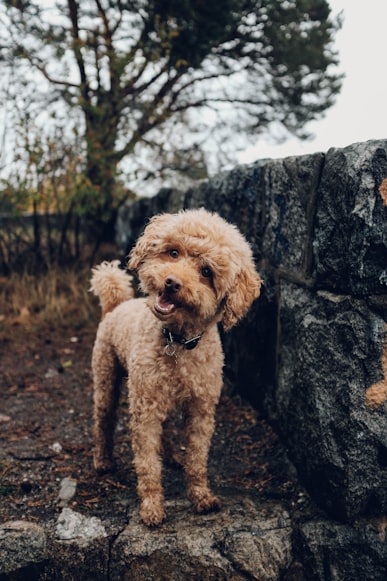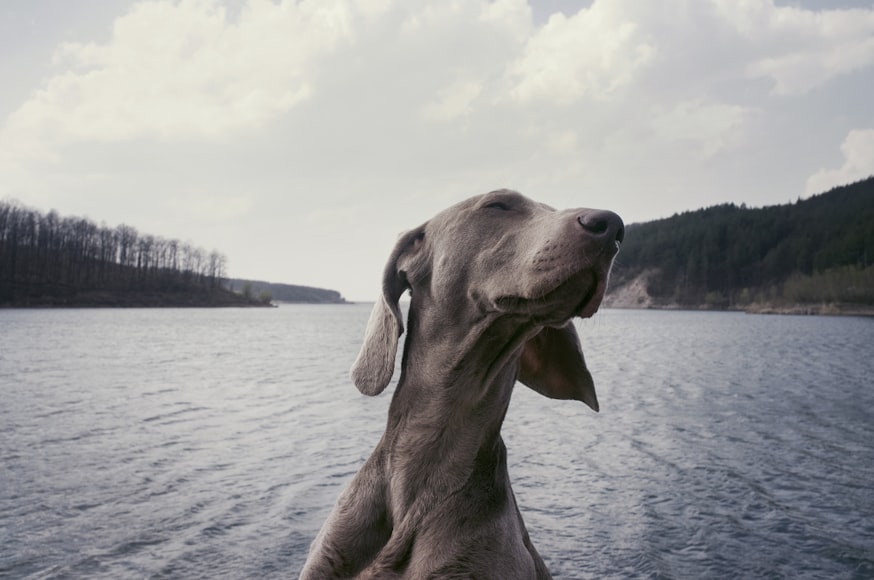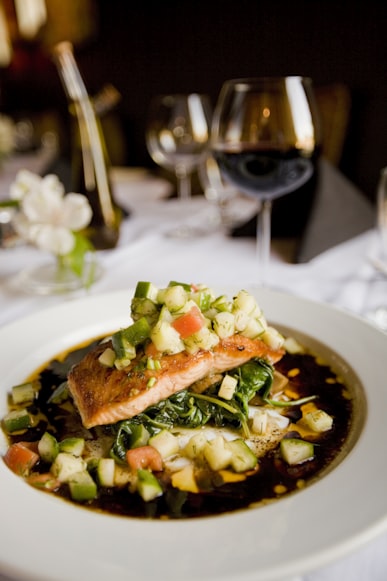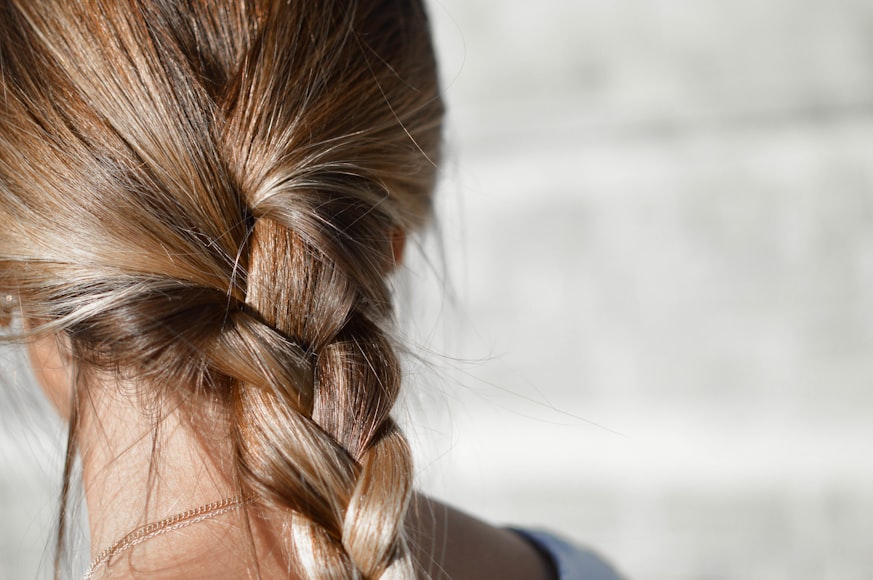I. Identifying the Problem

Separation anxiety is a common issue among puppies, causing distress and behavioral problems when they are left alone. To effectively address this issue, it’s crucial to first identify the problem accurately.
Recognizing Signs of Separation Anxiety
- Excessive whining, barking, or howling when left alone
- Destructive behaviors, such as chewing on furniture or digging
- Elimination accidents in inappropriate places
- Pacing, panting, or drooling
- Physiological symptoms, such as increased heart rate and dilation of pupils
Ruling Out Other Potential Causes of Distress
Before concluding that your puppy has separation anxiety, it’s essential to rule out other potential causes of distress, such as:
- Medical issues: Health problems, such as urinary tract infections or digestive issues, can cause discomfort and anxiety.
- Lack of socialization: Puppies who are not adequately socialized may experience fear or anxiety when faced with novel situations.
- Environmental stressors: Loud noises, unfamiliar people, or sudden changes in routine can trigger anxiety in puppies.
- Boredom: Puppies who are left alone for extended periods without appropriate mental and physical stimulation may become bored and anxious.
Confirming the Diagnosis
To confirm a diagnosis of separation anxiety, your veterinarian or certified dog trainer can assess your puppy’s behavior and rule out any underlying medical conditions. They may recommend a controlled separation test to observe your puppy’s reaction when left alone.
Understanding the Importance of Early Intervention
Separation anxiety can worsen and become more difficult to manage over time. Early intervention is crucial to prevent lasting behavioral problems and ensure your puppy’s well-being. If you suspect that your puppy may have separation anxiety, seek professional help promptly.
II. Creating a Safe and Calm Environment

Separation anxiety, a distressing condition characterized by excessive worry and anxiety when separated from their caregiver, can be a significant challenge for young puppies. Providing a safe and calm environment is crucial to managing this condition and promoting their well-being. Here are some effective strategies to create a sanctuary for your furry friend:
Establishing Designated Safe Spaces
- Create a “den” or private space: Dogs are instinctively drawn to enclosed areas that provide a sense of security. Consider setting up a cozy den in a quiet corner of the house, lined with soft blankets and pillows.
- Establish a designated sleeping area: Puppies need a consistent and comfortable place to sleep. Choose a quiet and draft-free location and provide a comfortable bed or crate with plenty of soft bedding.
Providing Comforting Items
- Favorite blankets and toys: Familiar and comforting items can provide puppies with a sense of security. Place their favorite blankets and toys in their safe spaces, especially during times of separation.
- Interactive puzzle toys: Offering puzzle toys that dispense treats can engage your puppy’s mind and distract them from their anxiety. Place these toys within their safe space or crate.
Diffusing Calming Scents or Playing Soothing Music
- Calming scents: Lavender, chamomile, and vanilla are known for their calming effects. These scents can be diffused using an essential oil diffuser or applied to a bandana or soft toy that can be placed in your puppy’s safe space.
- Soothing music: Playing gentle and soothing music can help create a calming and relaxing atmosphere. Consider playing classical music, ambient sounds, or white noise during times of separation.
Additional Tips:
- Avoid excessive attention: While it’s important to provide comfort, showering your puppy with constant attention before and after separations can reinforce their anxiety.
- Provide regular exercise: Exercise can help reduce stress and anxiety in puppies. Ensure they get plenty of physical activity before and after periods of separation.
- Establish a consistent routine: Puppies thrive on routine. Stick to regular feeding, playtime, and naptime schedules to provide a sense of predictability and reduce anxiety.
Creating a safe and calm environment is essential for managing separation anxiety in puppies. By providing designated safe spaces, comforting items, and calming scents or music, you can help your furry friend cope with the anxiety associated with being apart from you. With patience, consistency, and the right techniques, you can empower your puppy to live a happy and fulfilling life despite their separation anxiety.
III. Gradual Desensitization

Introduction
Separation anxiety is a common and distressing condition that affects many puppies. It can lead to excessive barking, whining, destructive behaviors, and even self-harm. Fortunately, there are effective training methods to help puppies overcome separation anxiety, including gradual desensitization.
III. Gradual Desensitization
Gradual desensitization is a process of gradually exposing a puppy to the triggers that cause their separation anxiety, while also providing positive reinforcement. This helps the puppy associate the absence of their owner with something positive, reducing their anxiety levels.
Steps:
1. Start with Short Absences:
Begin by leaving your puppy alone for very short periods, such as 5-10 seconds. Gradually increase the duration of absences over time.
2. Leave Behind Treats or Toys:
Before leaving the puppy alone, give them a special treat or toy that they enjoy. This will help them associate your departures with something positive.
3. Stay Calm and Confident:
When leaving and returning, always remain calm and confident. Avoid excessive affection or farewell rituals, as this can reinforce the puppy’s anxiety.
4. Use Crates or Playpens:
If necessary, confine your puppy to a crate or playpen while you’re away. This provides a safe and designated space where they can feel less anxious.
5. Seek Professional Help if Needed:
If you experience difficulties or the puppy’s anxiety persists, consider consulting with a certified animal behaviorist or veterinarian. They can provide additional guidance and support.
Tips:
- Observe your puppy’s body language for signs of distress. If they become anxious, reduce the duration of absences or the intensity of the triggers.
- Be patient and consistent. Gradually desensitizing a puppy takes time and effort.
- Avoid punishing or scolding the puppy for separation anxiety behaviors. This will only worsen their anxiety.
- Make sure the puppy has plenty of exercise, mental enrichment, and socialization opportunities to reduce their overall stress levels.
Conclusion
Gradual desensitization is a safe and effective method for training puppies with separation anxiety. By gradually exposing them to the triggers that cause their anxiety while providing positive reinforcement, you can help them overcome their fear and develop healthy coping mechanisms. With patience, consistency, and professional help when needed, you can give your puppy the confidence and security they need to feel comfortable when you’re not around.
IV. Establishing a Routine

Separation anxiety in puppies can be a distressing experience for both the puppy and their owner. Establishing a reliable routine is crucial in managing and reducing this anxiety.
Creating a Predictable Schedule
A structured schedule provides consistency that can help puppies feel secure and reduce their fear of being left alone. Stick to a regular feeding, walking, and playtime schedule as much as possible. Even on weekends or during vacations, try to maintain the same routine.
Feeding: Establish regular feeding times and locations. Puppies may be more relaxed and less anxious when they know when and where they will be fed.
Walks: Schedule consistent walks to give your puppy an opportunity to burn off energy and relieve stress. Walk them at the same time each day, even if you are leaving the house for a short period.
Playtime: Dedicate specific times for interactive play and socialization. Engage your puppy in activities they enjoy, such as fetch, tug-of-war, or puzzle toys. This not only strengthens your bond but also stimulates their mind and body.
Maintaining Consistency in Activities
Even when leaving the house, maintain consistency in activities. For example, take your puppy for a short walk before you leave, even if it’s just for a few minutes. This helps them associate leaving with something positive and predictable.
Gradual Departure: When you need to leave your puppy, do so gradually. Start by leaving them alone for short periods (5-10 minutes) and gradually increase the duration over time.
Avoid Overindulgence: Avoid showering your puppy with excessive attention before you leave. This can create a false sense of security and make separation more difficult for them. Instead, stay calm and act naturally.
By establishing a consistent routine, you can provide your puppy with a sense of predictability and security. This can significantly reduce their anxiety and make it easier for them to cope with being left alone.
V. Training “Stay” and “Come” Commands

Separation anxiety in puppies is a common behavior problem that causes distress when the dog is separated from its owner. Training puppies to respond to the commands “stay” and “come” is essential for managing separation anxiety and ensuring the dog’s safety.
Reinforcing Obedience Commands in the Presence and Absence of the Owner
To effectively train a puppy with separation anxiety, it is crucial to reinforce obedience commands both in the presence and absence of the owner.
- In the presence of the owner: Train the puppy in a controlled environment, such as inside the house or in a fenced yard. Give the command and reward the puppy immediately when it responds correctly. Gradually increase the distance and distractions while repeating the commands.
- In the absence of the owner: Once the puppy has a solid understanding of the commands in the owner’s presence, start practicing in their absence. Leave the puppy for short periods and gradually increase the duration. Use a video camera to monitor the puppy’s behavior and address any anxiety triggers.
Using Positive Reinforcement and Repetition
Positive reinforcement is key in training puppies with separation anxiety. Reward the puppy for desired behaviors using treats, praise, or play. Avoid punishment, as this may worsen anxiety.
Repetition is essential for learning. Repeat the commands multiple times in various situations to help the puppy generalize the behavior to different environments.
Teaching the “Stay” Command
- Have the puppy on a leash in a calm environment.
- Hold a treat in front of the puppy’s nose and lure it to take a few steps backward.
- Say the command “stay” and immediately reward the puppy.
- Gradually increase the distance and duration of the stay.
- Practice in different locations and with distractions.
Teaching the “Come” Command
- Hold a treat in your hand and lure the puppy towards you.
- As the puppy comes closer, say the command “come.”
- Immediately reward the puppy with the treat.
- Practice the command in different locations and with distractions.
- Teach the puppy to come to you from a distance by using a whistle or a long leash.
By consistently reinforcing obedience commands and using positive reinforcement, you can help your puppy with separation anxiety become more relaxed and comfortable when separated from you. Training is an ongoing process, so be patient and consistent with your approach. If you encounter challenges, consult a certified dog trainer for guidance.
VI. Crate Training
Crate training is a valuable tool in managing separation anxiety in puppies. By creating a positive association with the crate, you can provide your pup with a safe and comfortable space while you’re away.
Introducing the Crate
Begin by introducing the crate as a positive and inviting space.
- Place a soft blanket or bed inside the crate.
- Let your puppy explore the crate on their own time.
- Scatter treats or toys around and inside the crate to make it a desirable place.
Gradually Increasing Time
Once your puppy feels comfortable entering the crate, gradually increase the time they spend inside.
- Start with short intervals of a few minutes.
- Gradually extend the duration by a few minutes each time.
- Always make sure your puppy is calm and relaxed before closing the door.
Using Positive Reinforcement
Avoid using punishment or confinement as a form of training. Instead, focus on rewarding your puppy for positive behaviors associated with the crate.
- Offer treats or praise when your puppy enters the crate willingly.
- Gradually increase the distance from the crate while your puppy is inside.
- If your puppy starts to whine or bark, calmly redirect their attention and reward them when they calm down.
Tips for Success
- Choose a crate that is the appropriate size for your puppy.
- Place the crate in a quiet and low-traffic area of the house.
- Use a blanket or cover to create a den-like atmosphere.
- Avoid leaving your puppy in the crate for extended periods, especially when they are very young.
- Make sure your puppy has access to water while in the crate.
Crate training can be an effective way to help your puppy with separation anxiety by providing them with a safe and comforting place when you’re not around. By gradually introducing the crate and using positive reinforcement, you can create a positive association with it and help your puppy overcome their anxiety.
VII. Exercise and Enrichment
Separation anxiety in puppies can be a distressing condition. However, incorporating ample exercise and enrichment into their routine can be instrumental in managing this issue and promoting overall well-being.
Physical Exercise
Providing regular opportunities for physical activity is crucial for puppies with separation anxiety. Physical exercise helps release pent-up energy, reduce stress, and promote calmness. Engage in daily walks of at least 30 minutes, gradually increasing the duration and intensity as your puppy becomes accustomed to them.
Mental Stimulation
Mental enrichment is just as important as physical exercise for puppies with separation anxiety. Challenge your puppy’s mind with interactive games, puzzle toys, and training sessions. Teach commands, such as “sit,” “stay,” and “come,” to provide structure and engage their cognitive abilities.
Puzzle Toys and Food Dispersal
Puzzle toys and food dispersal devices can provide both mental and physical stimulation. Fill puzzle toys with treats and encourage your puppy to work to extract them. You can also place treats in different locations around the house, such as in Kongs or hidden in corners. This encourages scavenging and exploration, reducing boredom and anxiety.
Training Sessions
Regular training sessions not only enhance your puppy’s obedience but also build a strong bond between you. Incorporate positive reinforcement techniques and practice separation scenarios gradually. Start by leaving your puppy alone for short periods of time and gradually increase the duration as they become more comfortable.
Enrichment Activities for Puppies Alone
When you’re not home, provide your puppy with a variety of enrichment activities to keep them occupied and reduce anxiety. These activities may include:
- Interactive toys: Toys that dispense treats or provide stimulation, such as treat balls or automated laser pointers.
- Calming music: Play soothing music or white noise to create a relaxing environment.
- Scent enrichment: Hide treats or toys soaked in your scent to comfort your puppy.
- Doggy daycare or playdates: Consider enrolling your puppy in doggy daycare or setting up supervised playdates with other compatible dogs to provide socialization and companionship.
By incorporating ample exercise and enrichment into your puppy’s routine, you can help manage their separation anxiety, promote relaxation, and create a happier and more fulfilled life for your furry companion.
VIII. Medication (if necessary)
For puppies with severe separation anxiety, medication may be necessary as a supplement to training. Consulting with a veterinarian is crucial to determine if medication is appropriate and to explore the best options.
Consulting with a Veterinarian
- Veterinarians can assess the severity of your puppy’s anxiety by observing their behavior and reviewing a thorough history.
- They can rule out any underlying medical conditions that may be contributing to the anxiety.
- They will discuss the potential benefits and risks of medication and provide recommendations based on your puppy’s individual needs.
Exploring Medication Options
- Anxiolytics: These medications help to reduce anxiety and stress. They can include benzodiazepines (e.g., diazepam, alprazolam) or buspirone.
- Antidepressants: Certain antidepressants, such as fluoxetine and sertraline, can help to regulate mood and reduce anxiety.
- Other Medications: In some cases, non-prescription supplements like melatonin or pheromone diffusers may provide some relief.
Important Considerations
- Medication should be used only as a supplement to training and not as a sole solution.
- It may take time for medication to take effect, so patience and consistency are essential.
- The dosage and frequency of medication may need to be adjusted over time.
- It is crucial to follow your veterinarian’s instructions carefully and administer medication as directed.
- Long-term use of certain medications may require regular monitoring by a veterinarian.
Conclusion
Medication can be a valuable tool in managing severe separation anxiety in puppies. However, it is important to consult with a veterinarian first to determine if medication is appropriate and to explore the best options. With the right combination of medication and training, puppies with separation anxiety can overcome this challenging behavior and develop into happy and well-adjusted companions.
















